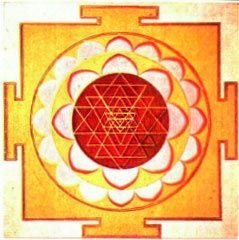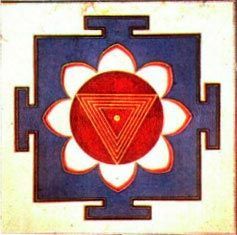What is a Tantric Massage?
Have you ever wondered what a tantric massage is? Today we want to clarify that, like the word “tantra”, there are many misunderstandings and misuses of the term “tantric massage” or “tantra massage”. Many relate it wrongly with a massage with “happy ending” or, in other words, with a mere sexual release. In fact, it is very common to see using “tantric massage” to refer to these practices, so it is not surprising that confusion has spread.
What is a Tantric Massage?
To get to know tantric massages better, we will previously know more about one of the oldest currents of thought: the Tantra.
What is the Tantra?
The oldest texts of Tantra that have come down to us date back to the year 600 but collect oral traditions that some specialists originate in Vedic India before 1500 BC. C. There are traces of Tantric tradition in the culture of Mohenjo-Daro (3,000 BC) and it is, therefore, one of the oldest forms of thought that have survived to this day. Tantra is a Hindu, Buddhist and Jainist esoteric current, contrary to asceticism and the denial of the body and the senses as means to achieve liberation and enlightenment. His philosophy is based on belief, on the fusion of opposites into a universal cosmic unit. Like Hermes Trismegistus, when he says “as it happens above, so it happens below”, Tantra says “everything that exists is here, what is not here is nowhere”. To achieve the harmonious integration of man with the universe, Tantra, by affirming the body and the senses, seeks a channeling of energy in the individual that elevates him to higher levels of consciousness. For this the cosmic energy, kundalini, represented as a serpent of fire, will penetrate the subtle body through the vital air “prana”, through breathing exercises that will make it ascend the nerve channels or “nadi” associated with the left side, the moon, the feminine, “ida”; and on the right side, the sun, the masculine, “pingala”. The kundalini ascends through the channel of the vertical central axis of the spinal column, “susshuma”, which penetrates through the seven “chakras” or energy centers.

Diagram of the situation of the six chakras in the subtle body.
The external techniques that make possible the opening of the “chakras” and the ascension of the kundalini are the contemplation of the “yantras”, geometric visual diagrams that in their manifestation of concentric circles are called “mandalas”, the intonation of sacred sounds called “mantras” “And the practice of gestures and postures,”mudras” and “asanas”, which lead to the absolute control of physical, mental and mental resources through the performance of the sexual act. From the Hindu mythical trinity formed by Brahma, Shiva and Vishnu and their feminine opponents, Shiva has been adopted by Tantra as a personification of the masculine principle of the cosmos. His female opponent, Shakti, is an exponent of a kind of religious rediscovery of the mystery of women and the revaluation of their cosmic energy, being the woman in Tantra, active principle. Another important female goddess in Tantric mythology is Kali, mother of the mythical trinity, builder and destroyer of the world who always lives in an eternal return or “samsara”.

The masculine and feminine principles of the Cosmos, represented as the combination of Shiva and Kali in a single human body simultaneously man and woman.
Therefore, Tantra seeks to reach the highest level of consciousness and personal fulfillment by affirming the body and using as media the meditative contemplation of the “yantras”, the auditory repetition of the “mantras” and the realization of “mudras” and “asanas” based on breathing exercises and sexual techniques.
But the practice of Tantra should not be attempted individually without the help of masters or “gurus” who have already attained enlightenment, since the opening of the “chakras” and the raising of the kundalini out of a context of balanced growth can lead to the imbalance, and even mental illness. For Gurdejieff the kundalini is the power of imagination and fantasy that acquire relevance of reality.
Understanding Tantra through art
To understand the concepts that underlie Tantra thinking, it is very helpful to know the ancestral works of Tantric Art. The largest art exhibition based on Tantra can be found in the New Delhi Museum, which is the most important art exhibition in India. Let’s get to know Tantra better through the art and texts of Ajit Mookerjee, author of several important studies on Tantra, and who was also the director of that museum.
The Tantra in Barcelona was already known in 1976, the year in which a sample of Tantric Art was exhibited in the Ciudad Condal, which was the most important art exhibition in India that had been done to date in Spain. The exhibition, mounted in collaboration with the director of the New Delhi Museum, Ajit Mookerjee, had toured the main museums in Europe: the British Arts Council in London, the Völkerskunde in Vienna, the Kunsthalle in Zurich, the Lovisian Foundation in Copenhagen and the Amsterdam Tropenmuseum. and it would be exhibited later in Sydney before returning to its usual place in New Delhi. In the collection of works of Tantric Art exhibited, the visit was organized so that the different concepts and aspects of Tantra are discovered room by room:
- It started from a room with photographs of contemporary rituals of India, as well as ritual objects of tantric influence, which introduced into the environment that would allow to penetrate the philosophy of this art. The first room was dedicated to the symbols on which Tantra is based on the cosmic order, light, fire, energy, the union of “lingam” and “yoni” representative of the two sexes. In one of the works exhibited in this room appeared two snakes – feminine energy – wound around an invisible “lingam” and that were copied in the caduceus of the classic Mediterranean civilizations and now serve as an emblem to pharmaceutical science.
- It was then passed to scientific cosmology in the physical sense that shows diagrams of the universe, the earth or the moon. A flat land surrounded by oceans, crossed by seven rivers, in the center of which is Mount Meru, the dwelling place of the gods.
- Next, the exhibition showed two large rooms dedicated to the mythology of Life and Death. Eros and Thanttos, life and destruction, the two sides of the same coin. In the first: Shlva-Khrisna, Vishnu, Shakti. The mythical cycle of Kishnu-Khrisna represents the positive, erotic aspect of the cosmos. The blue skin of Khrisna indicates that it is a human ancarnation of Vishnu. The love practiced between the incarnated god and the “gopi”, terrestrial girls, makes the landscape bloom around the lovers. In the second, the terrible goddess Kali crushing love and life, stepping on lovers, reflects the idea of death and destruction as a necessary condition for the return of love and energy. We then penetrate into the next room in the world of the subtle body existing in our dreams, but whose nerves are not visible to any current doctor. We see diagrams of the subtle body with the nerve channels, “nadi”, and the “chakras” through which the energy rises; “chakras” in the shape of a lotus whose last stage beyond the head is surrounded by a thousand petals.
- A space dedicated to the subject of the hand was also dedicated, with diagrams for the practice of palmistry and models for female ritual makeup. In addition, in other spaces the “asanas” were shown, the erotic postures that duly performed will constitute a path for enlightenment and to reach the highest level of consciousness. The body, in its sexual manifestations, is considered by Tantra as a means of vital fullness that allows to experience and direct the same energy that fecundates the earth and moves the stars.
- From here on, the exhibition promoted the first floor and the abstract: the “yantras” and “mandalas”, which transmit energy through meditative contemplation. In the “yantra” of Kali, the central point “bindu” symbolizes the zero dimension, the origin and the end, the starting point of the expansion of space and at the same time the final point of the last integration. The triangle with the vertex downwards is the symbol of the “yoni”, which means the feminine cosmic principle, the creative energy. The eight-petalled lotus flower that frames the whole symbolizes the eight elements: earth, water, fire, air, ether, mind, intellect and ego consciousness. In the “yantra” of Shri the interpretation of 4 and 5 triangles in the opposite direction symbolizes the perfect integration of “lingam” and “yoni“. The “yantra” of “OM” is the visual symbolization of the main mantra “om”. The acoustic waves produced by “om” have an inaudible frequency for man, they are the equivalent of the “bindu” or central point.
Below we can see a gallery with some of the works that were part of the exhibition:
Important details on the tantric massage
As we have seen, the role of massage in the way of tantra is much deeper. In contrast, the massage given for sexual pleasure could be called “erotic massage”, leaving the term “tantric massage” to encompass an experience of a much broader dimension. It is not necessary to associate this massage with the search for orgasm, but its purpose is broader, since it seeks to know the body itself (also its erogenous zones) as means to achieve liberation and enlightenment and achieve physical and spiritual fulfillment.
Let’s see 4 important details about tantric massage that will help you enjoy yourself to a greater extent.
Methodology
No two tantric massages are the same. The procedure usually begins throughout the body in search of deactivating those mental processes that prevent the mind from relaxing to open us to a world where sensations take power over thoughts. Reached a state of sensory perception more intense and pleasant, tantric massage happens to focus on key points and stimulation of the chakras.
Considerations
Giving and receiving tantric massage is an intimate experience. Although the receiver adopts a passive role, he should focus on breathing that he must be conscious of, in a deep and slow way, in order to reach maximum relaxation and connect with the sensations that will go through his whole body.
Benefits
Like other forms of massage, tantric can be very relaxing, and can also relieve physical pain and emotional fear. But it’s not just these benefits, as Nik Douglas, producer, writer and director of the 1969 film, states: “Tantra: Indigenous Rites of Ecstasy.” According to Douglas, by stimulating the inherent sensual spirituality through tantric massage, people can awaken parts of themselves that have remained repressed or asleep. Thus, there are many improvements at a spiritual and mental level that are obtained from this millenary technique.
Breathing
Tantric massage benefits from the use of breathing techniques throughout the massage. These allow the receiver to actively channel their energies from one part of the body to another, an experience that leads to knowledge of one’s body and self-control during arousal.
If you want to book tantric massage in Barcelona, from Thai Zen Barcelona we recommend choosing a professional to experience an extraordinary experience, and we invite you to visit our select menu of massages.













